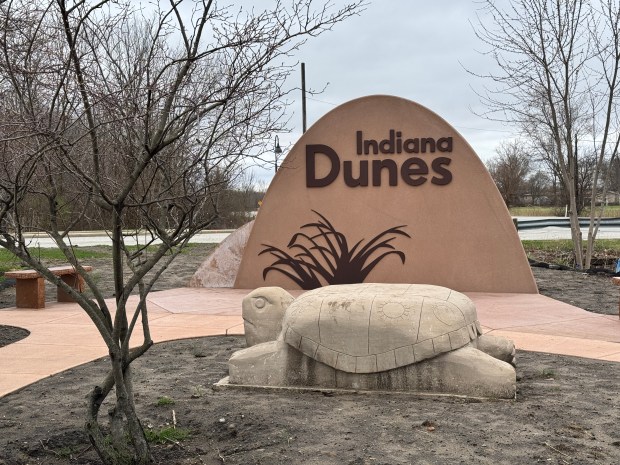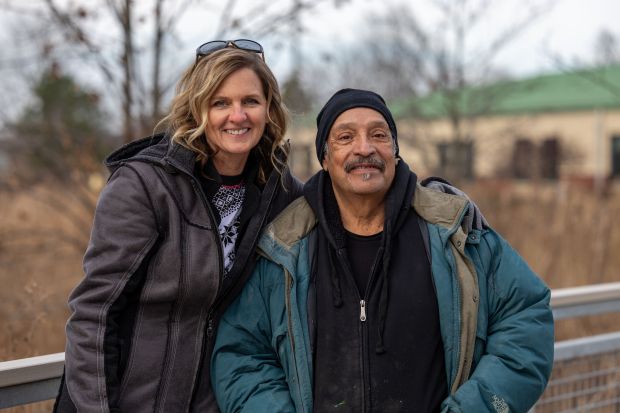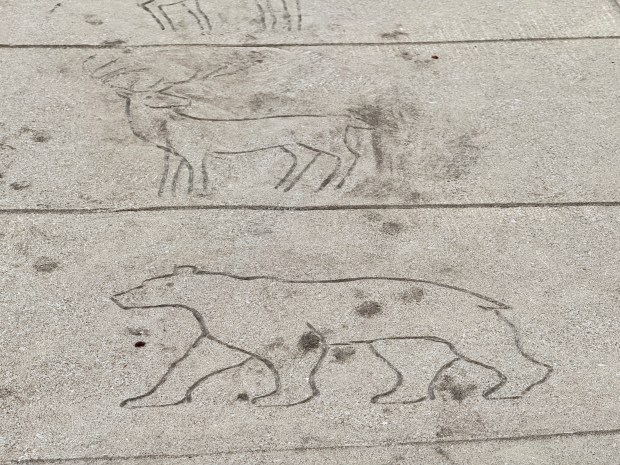Three limestone snapping turtles have joined the Indiana Dunes Indigenous Cultural Trail at the Indiana Dunes Visitor Center on Indiana 49 in Porter.
The turtles are only the latest addition, Indiana Dunes Tourism President and CEO Christine Livingston said. The trail will keep expanding as the years progress. “I don’t know that we’ll ever be finished,” she said.
The National Park Service, which shares the visitor center with Indiana Dunes Tourism, owns 15 adjacent acres that the trail might eventually expand onto.
Snapping turtles are important to both the Miami and Potawatomi tribes, although for different reasons, Livingston said. Both tribes consider the Indiana Dunes area part of their ancestral homeland.
Sculptor Roman Villarreal, whose portfolio includes works on Chicago’s South Side and at Steelworkers Park, chiseled the turtles out of 15,00-pound chunks of limestone. Potawatomi artist Bmethwen, also known as Kyle Malott, designed the etchings on the backs of the turtles.
The etchings reflect the 13-month lunar calendars the tribes used, with a different design on each of the 13 scales on a snapping turtle’s back. Each design reflects the significance of a month, connecting with nature.
The turtles are large enough that kids will be able to crawl on them as they interact with the exhibit.
Livingston wanted the exhibit to be immersive, for people to be able to interact with it. “It’s meant to be an experience that has depth to it,” she said. “Climbing on them, touching them, the surface is very tactile.”

The turtles are placed in mud near the Indiana Dunes sign in front of the visitor center now, but the mud will be supplanted with vegetation when the weather is right. A concrete walkway surrounds them.
Signage will be added soon to tell about the turtles and their significance to the tribes.
Limestone was chosen for the sculptures because it’s a native material.
“I was having a really hard time finding an artist. We wanted to have an indigenous artist,” Livingston said. The sculptor needed to have experience with limestone, too.

The Chicago Sculptors Association helped her find Villarreal to do the work. “It was truly a team effort,” she said.
“We want to put more sculptures out there,” Livingston said, as the tourism agency fills out its five-acre site.
Already, the Indiana Dunes Indigenous Cultural Trail includes boardwalks, a fire pit and murals as well as the snapping turtles.
An Indiana Dunes tree trail is expected to debut soon with signs naming various native trees along the trail and pointing out their significance to the two tribes. Signage will be in English, Potawatomi and Miami.
Doug Ross is a freelance reporter for the Post-Tribune.



